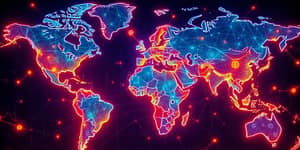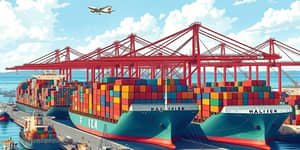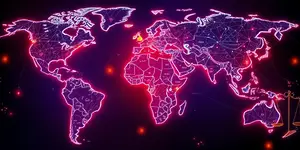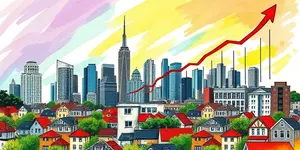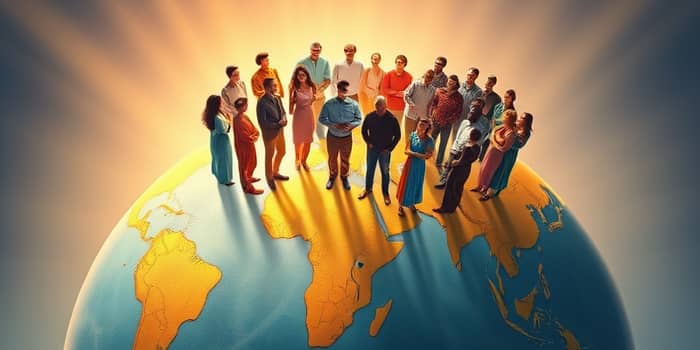
In the wake of an unprecedented global health crisis, the world has witnessed not only an uneven recovery but also an alarming acceleration of economic disparities. As countries scramble to rebuild, the gulf between the wealthy and the poor has expanded, threatening social cohesion and sustainable development. This article delves into the complex dynamics that have shaped global inequality before, during, and after the COVID-19 pandemic, and charts a course toward a more equitable future.
Global inequality encompasses the economic divides both within nations and between them. While absolute poverty has declined over the past decades, income and wealth have become increasingly concentrated at the top. Today, two-thirds of the world’s population live in countries where income inequality is on the rise, highlighting a disturbing trend of widening gaps that undermine collective progress and social harmony.
Historically, the Industrial Revolution and globalization fueled economic growth, but benefits were often unevenly distributed. In recent decades, technological advances and financial liberalization have disproportionately rewarded capital owners and highly skilled workers. Simultaneously, labor markets in many economies have become bifurcated, with secure, high-paying jobs on one end and precarious, low-wage work on the other. This duality has shaped a world where millions remain trapped in cycles of deprivation, unable to access quality education, healthcare, or upward mobility.
The outbreak of COVID-19 marked a turning point: for the first time in three decades, between-country inequality increased. The pandemic’s shockwaves were most pronounced in low-income nations, where limited health infrastructure, fragile social systems, and dependency on commodity exports exacerbated economic downturns. These nations experienced rolling lockdowns, supply chain disruptions, and sovereign debt crises that starkly contrasted with the swift recoveries seen in wealthier states.
More than just a health emergency, COVID-19 triggered unprecedented economic disruptions and losses that disrupted lives and livelihoods. Wealthier countries launched expansive fiscal and monetary stimulus packages that buoyed markets and households. In contrast, many developing economies confronted a scarcity of resources, vaccine inequity, and mounting debt burdens. Educational disruptions and lack of digital access in poorer regions further deepened the divide, denying millions the tools to adapt and thrive.
The human cost has been staggering. The pandemic pushed 838 million people into extreme poverty by 2022, raising the global rate to 10.5%. Sub-Saharan Africa felt the brunt, with the poverty rate leaping from 37.0% to 45.5%, erasing years of progress in a matter of months. Such outcomes not only reverse gains but risk entrenching multigenerational hardship if left unaddressed.
As global economic activity rebounded in 2021 and 2022, the pace of recovery diverged significantly. Wealthier nations regained pre-pandemic output levels quickly, driven by fiscal stimulus and robust financial markets. Conversely, many developing economies faced prolonged contractions, with growth hampered by inflation, capital flight, and mounting debt. The result is an uneven recovery widened existing wealth gaps, entrenching disadvantage and threatening long-term stability.
Despite projections that extreme poverty may dip to 9.9% by 2025, this remains perilously high, affecting over 780 million individuals. In Sub-Saharan Africa, nearly half of the population now lives under extreme poverty, reversing decades of progress. South Asia offers some respite, with poverty declining to 7.3%, yet gains are fragile amid rising food and energy costs. These regional disparities underscore the multifaceted nature of inequality and the need for tailored responses.
Surveys across 36 countries reveal that 54% of respondents perceive the gap between rich and poor as a “very big problem.” This growing public concern reflects a broader understanding that unchecked inequality undermines social trust, fuels political polarization, and inflames civil unrest. Citizens are calling for policies that prioritize human welfare, equity, and opportunity over unchecked market gains.
At its core, addressing global inequality requires more than economic growth; it demands intentional redistributive measures and strong social contracts. Policymakers face an urgent call for systemic change to remove barriers that prevent marginalized communities from advancing. Without decisive action, the world risks entrenching an economic order where opportunity is reserved for a shrinking elite.
What can be done to reverse these alarming trends? Experts point to a multifaceted approach that combines policy reforms, international cooperation, and community-driven initiatives. Key strategies include:
Successful examples already exist: conditional cash transfers in Latin America have lifted millions out of poverty, microfinance programs in South Asia have catalyzed small businesses, and universal school meal initiatives in sub-Saharan Africa have improved attendance and nutrition. Such interventions demonstrate the power of targeted support in transforming lives and bridging divides.
Global challenges require global solutions. Debt relief for the poorest countries can free resources for health, education, and infrastructure. Coordinated monetary and fiscal policies can stabilize markets and curb inflationary pressures. Rich nations have a moral and pragmatic interest in supporting development; reducing global inequality fosters peace, enhances markets, and mitigates migration crises.
Institutions such as the United Nations, World Bank, and International Monetary Fund must align priorities with the Sustainable Development Goals, focusing on sustainable and inclusive economic policies. Private sector engagement is also crucial: impact investing, ethical supply chains, and corporate social responsibility can channel capital towards underserved regions and sectors.
The story of global inequality in the post-pandemic era is a cautionary tale of resilience overshadowed by disparity. While economies have regained momentum, too many communities are left behind. The widening divide poses risks not only to those in poverty but to global stability, health, and solidarity.
Yet, there is room for hope. Historical precedents—from the social reforms of the mid-20th century to recent poverty reduction successes in East Asia—illustrate that progress is possible when societies invest in equity and unity. By embracing bold policies, fostering international partnership, and empowering marginalized voices, the world can chart a course toward a future where prosperity is shared, opportunity is universal, and dignity is unwavering.
Now is the moment to act. The choices made today will determine whether we perpetuate a fractured world or build one that thrives on cooperation, fairness, and hope.
References






